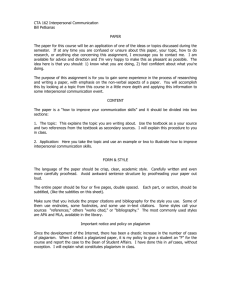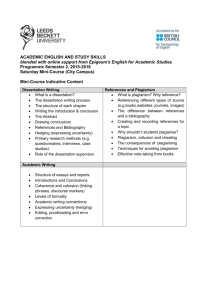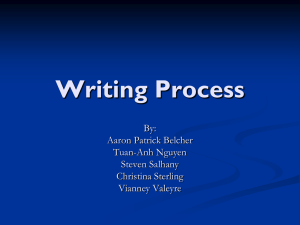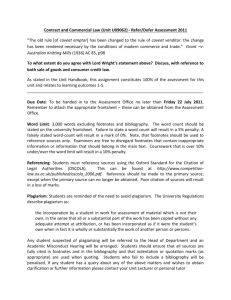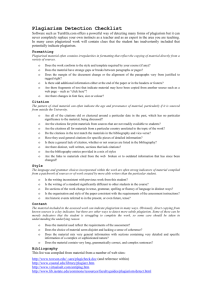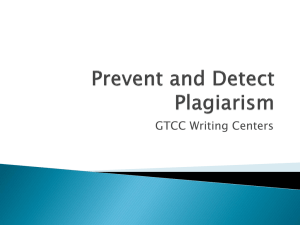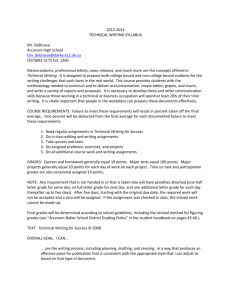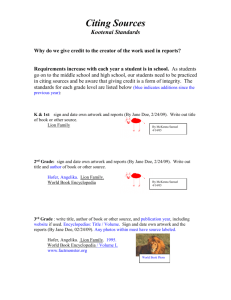Concept
advertisement
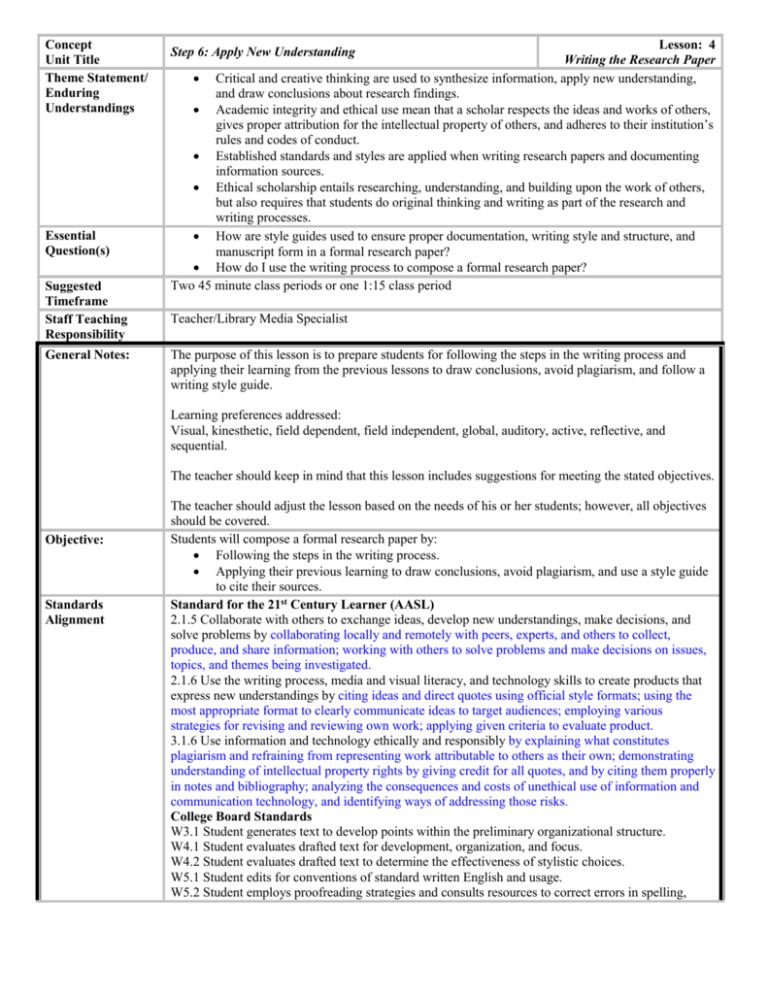
Concept Unit Title Theme Statement/ Enduring Understandings Essential Question(s) Suggested Timeframe Staff Teaching Responsibility General Notes: Lesson: 4 Writing the Research Paper Critical and creative thinking are used to synthesize information, apply new understanding, and draw conclusions about research findings. Academic integrity and ethical use mean that a scholar respects the ideas and works of others, gives proper attribution for the intellectual property of others, and adheres to their institution’s rules and codes of conduct. Established standards and styles are applied when writing research papers and documenting information sources. Ethical scholarship entails researching, understanding, and building upon the work of others, but also requires that students do original thinking and writing as part of the research and writing processes. How are style guides used to ensure proper documentation, writing style and structure, and manuscript form in a formal research paper? How do I use the writing process to compose a formal research paper? Two 45 minute class periods or one 1:15 class period Step 6: Apply New Understanding Teacher/Library Media Specialist The purpose of this lesson is to prepare students for following the steps in the writing process and applying their learning from the previous lessons to draw conclusions, avoid plagiarism, and follow a writing style guide. Learning preferences addressed: Visual, kinesthetic, field dependent, field independent, global, auditory, active, reflective, and sequential. The teacher should keep in mind that this lesson includes suggestions for meeting the stated objectives. Objective: Standards Alignment The teacher should adjust the lesson based on the needs of his or her students; however, all objectives should be covered. Students will compose a formal research paper by: Following the steps in the writing process. Applying their previous learning to draw conclusions, avoid plagiarism, and use a style guide to cite their sources. Standard for the 21st Century Learner (AASL) 2.1.5 Collaborate with others to exchange ideas, develop new understandings, make decisions, and solve problems by collaborating locally and remotely with peers, experts, and others to collect, produce, and share information; working with others to solve problems and make decisions on issues, topics, and themes being investigated. 2.1.6 Use the writing process, media and visual literacy, and technology skills to create products that express new understandings by citing ideas and direct quotes using official style formats; using the most appropriate format to clearly communicate ideas to target audiences; employing various strategies for revising and reviewing own work; applying given criteria to evaluate product. 3.1.6 Use information and technology ethically and responsibly by explaining what constitutes plagiarism and refraining from representing work attributable to others as their own; demonstrating understanding of intellectual property rights by giving credit for all quotes, and by citing them properly in notes and bibliography; analyzing the consequences and costs of unethical use of information and communication technology, and identifying ways of addressing those risks. College Board Standards W3.1 Student generates text to develop points within the preliminary organizational structure. W4.1 Student evaluates drafted text for development, organization, and focus. W4.2 Student evaluates drafted text to determine the effectiveness of stylistic choices. W5.1 Student edits for conventions of standard written English and usage. W5.2 Student employs proofreading strategies and consults resources to correct errors in spelling, Formative Assessment Digital Content, Tools, and Resources Before Direct Instruction Suggested Activity Sequence: Differentiation Suggestions capitalization, and punctuation. W5.3 Student edits for accuracy of citation and proper use of publishing guidelines. Skills for Success Learning Skills: Apply acquired knowledge and skills effectively in new learning situations. Thinking Skills: Evaluate information, issues, and positions critically; demonstrate strategic thinking in a variety of situations to make effective decisions and achieve goals. Communication Skills: Plan for successful communication experiences. Technology skills: Demonstrate knowledge of current technologies; use technology effectively for a variety of purposes and situations. Outline Rough Draft Works cited, bibliography, notes, or references list Final Draft Student resources and tools for Step 6: Applying New Understanding – Writing the Research Paper: Pre-writing Writing a research report Revising and editing Publishing Assessments Remind students to refer to their notes from the “thinking outside the box”, drawing conclusions activity, and their Avoiding Plagiarism and Style and Citation guides from the activities in Step 6 throughout the writing process. Refer to Step 6: Applying New Understanding – Writing the Research Paper @ http://www.bcps.org/offices/lis/researchcourse/apply_understanding.html#writing Preview with students the steps in the writing process and resources for each step. Have students begin the Pre-writing step in class and continue working on their paper independently; encourage students to consult with the course instructor, mentor, or an English teacher for help during the writing process. Inform students of due dates for outlines/prewriting products, rough drafts, bibliography and final draft. Facilitate peer review using the PQP (Praise, Question, Polish) strategy. Provide guidance to individual students throughout the writing process. Components Content Process Product Curriculum Resources Different modalities Individual work/Group work, scaffolding, presentation style Adapting requirements Brief Description Video, lecture, reading, writing, kinesthetic, auditory Role assignment in groups, lecture, discussion, written worksheets, outlining, editing Length of paper, modification of presentation
